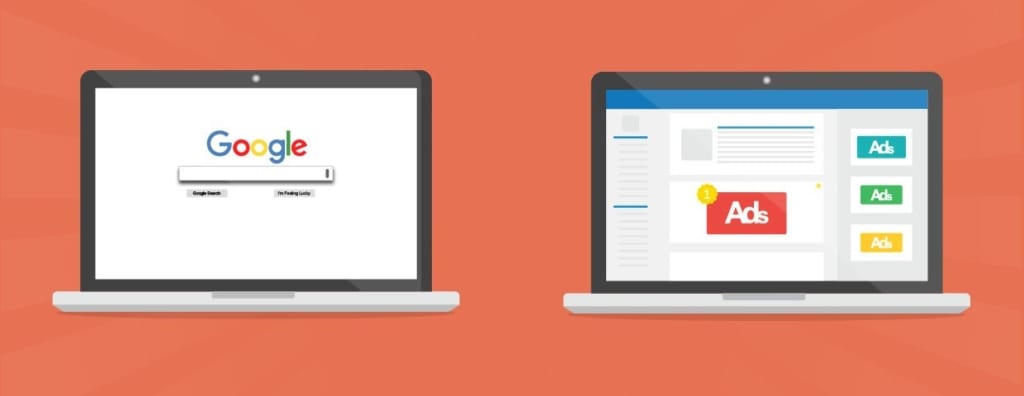
Marketing is about connecting with your audience at the right time and in the right place. In today’s digital landscape and with the rise of mobile, this means meeting them online. Display advertising is a digital billboard that helps recognize and find you.
According to Pew Research, 81 per cent of Americans go online every day. Of these, 28 per cent go online “almost constantly” and 45 per cent go online several times a day. The challenge for marketers is to show up in a way that sets your brand apart from competitors.
As more consumers go online, more businesses go online, and the challenge is that much greater. Display advertising is emerging as an effective response. Done right, it creates awareness of your brand. The result is that when buyers reach the conversion stage of their journey they know your brand, who you are and that you are trusted.
Without an awareness campaign powered by display advertising, you could be wasting your money on paid search or search engine advertising. The best way to maximize your ad spending is to use both.
What is display advertising?
Simply put, display advertising is a way to attract people to your website, social media or anywhere you are online. Banner ads are perhaps the oldest and most well-known forms of display advertising, but they aren’t the only ones.
Display ads can be a few lines of text plus a URL. They can be banners featuring images and video. They can show up in Gmail inboxes, mobile apps, and ad networks such as Google Display Network and Facebook’s Audience Network. In all cases, they have a specific goal: to get the audience to click onto a landing page and make a purchase.
If someone leaves a site without making a purchase, you can use a display advertising campaign to retarget them and give them another opportunity to buy.
Typically, you’ll get charged on a cost-per-click basis, with the amount based on your bidding strategy.
Tip: Banner ads are making a comeback thanks in large part to Google Display Network. It can give you access to more than two million websites and apps, YouTube and Gmail.
The difference between paid search and display advertising
Paid search enables businesses to buy listings in a search engine so your brand gets discovered on search engine results pages (SERPs). Marketers can target people who are researching and actively looking for something at the start of their buying journey.
The key to success is picking the right advertising platform for the situation. Search platforms are the go-to tool for reaching consumers conducting targeted searches because they are ready to buy. Websites and display ad platforms build brand awareness.
The big benefits of paid search are:
● Improved visibility.
● Precise targeting.
● Relatively low costs.
● Real-time data on what’s working and what’s not.
Paid search campaigns are effective for businesses which have tight budgets, lack website content to drive organic traffic, sell a specific product or service, or are looking to generate quality leads.
Display advertising targets people who are already consuming content. This means they have nothing to do with search engines and can be placed anywhere on the web consumers are browsing. Rather than waiting and hoping for people to find you, businesses can place these ads in front of customers even when they’re not looking for your products or services.
The big benefits of display advertising are:
● Options. You can choose the style and format that will most resonate with your target audience.
● Expanded reach. You can access millions of websites through the Google Display Network using your Google Ads account.
● Precise targeting.
● Real-time data on what’s working and what’s not.
Display advertising campaigns work best for businesses that want to build brand awareness and stay top-of-mind with consumers, and have products that photograph well and create visual interest.
Tip: Here are three free tools to help create display ads: Smart Ads Creator, Bannersnack and Canva.
How to get display advertising and paid search to work together
One of the most common mistakes marketers make is using the same ad campaign for display advertising and search networks. While this may seem like the most efficient thing to do, it’s not the most effective.
The best way to get the most out of your digital campaigns is to use both display advertising and paid search in ways that play to their respective strengths. What does this mean? Even though you’re combining them, make sure you design specific campaigns for each.
This requires creating budgets and ads that are relevant for each of the networks where you’ll be placing your display advertising and paid search ads. It also means organizing the feedback data you get in a way that lets you measure, monitor and optimize each format.
By using both, you’re driving sales with a holistic marketing approach by bringing together two stages of the buying process – conversion and awareness. It helps to think of marketing as a pie, with each slice representing different solutions to address the different parts of the buyer’s journey. Agencies can help you find the right solutions to meet your goals.

